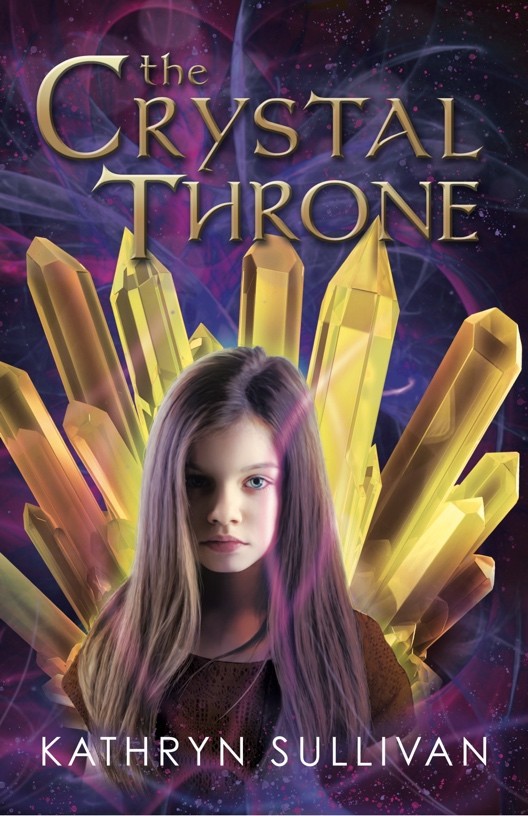We’re excited to introduce you to the always interesting and insightful Kathryn Sullivan. We hope you’ll enjoy our conversation with Kathryn below.
Kathryn, thanks for taking the time to share your stories with us today Learning the craft is often a unique journey from every creative – we’d love to hear about your journey and if knowing what you know now, you would have done anything differently to speed up the learning process.
I started writing when I was 14. The science fiction and fantasy I was reading of that time had very few female main characters and I wanted more stories with characters I could identify with. So I hauled out my dad’s manual typewriter and started writing. And sending out manuscripts and collecting rejections. And sending them out again. When I was in my late twenties, my stories began to be published in small magazines and fanzines. And then later in anthologies by small press. Some even requested a story from me.
I got my first book contract because an e-zine which had published some of my short stories wanted to branch out into e-books and asked if I had any novel-length stories. I did, and THE CRYSTAL THRONE was published shortly after. And tied for an award for best fantasy novel.
The ‘skill’ that was needed in my case was persistence. Traditional book publishers when I began submitting stories were only looking at agent-submitted stories. I didn’t have an agent. Once ebook publishers began to appear in the late 1990s and early 2000s, authors had more opportunities. Ebook publishers were willing to look at stories that didn’t come through agents.


Great, appreciate you sharing that with us. Before we ask you to share more of your insights, can you take a moment to introduce yourself and how you got to where you are today to our readers?
As I mentioned in the previous section, I started writing when I was 14. The science fiction and fantasy I was reading of that time had very few female main characters and I wanted more stories with characters I could identify with. So I hauled out my dad’s manual typewriter and started writing. And sending out manuscripts and collecting rejections. And sending them out again. When I was in my late twenties, my stories began to be published in small magazines and fanzines. And then later in anthologies by small press.
My first book, THE CRYSTAL THRONE, tied for an award for best fantasy novel. A collection of my short stories, AGENTS AND ADEPTS, was published shortly after (and also won an award), but I had a disagreement with that publisher and moved those two books and a sequel, TALKING TO TREES, to a different publisher. That publisher, Amber Quill Press, sadly, closed in March 2016. Zumaya Publications published AGENTS, ADEPTS AND APPRENTICES (some stories from the previous collection and some new ones), reprinted THE CRYSTAL THRONE and just in the past month reprinted TALKING TO TREES. A children’s picture book, MICHAEL AND THE ELF, is also in the process of being reprinted by Fox Pointe Publishing and will be released in midOctober.
I continue to write because I keep coming up with characters and stories that demand to be told. When characters start stomping around in your head demanding that you tell their stories, believe me, you tell their stories.
What’s the most rewarding aspect of being a creative in your experience?
It’s twofold.
It’s actually seeing my book or story in ‘print’, whether paper or electronic. After all the writing, rewriting, editing (including comma placement and what exactly is the right word), there it is. Done. Enjoying the brief moment of completion before turning back to the next story that is in process or the one after that that demands to be written.
It’s being on panels at science fiction conventions with other authors, especially ones I grew up reading. Being able to discuss the writing process, learning how they created their worlds, and just enjoying the shared experiences.
Another rewarding aspect is helping other authors. Lately I’m a member of Strong Women – Strange Worlds (https://



Learning and unlearning are both critical parts of growth – can you share a story of a time when you had to unlearn a lesson?
At 14, I read enough books on writing and submissions to know how to send out manuscripts, but not what the standard manuscript really looked like. After the single spaced, double-sided manuscript was rejected, I learned quickly. And nowadays submitting electronically is so much easier.
But, because I learned on a typewriter, the lesson I’ve had to unlearn is two spaces after every period. Nowadays it’s one space after every ending punctuation. I still do a ‘find/replace’ for two spaces after every period, question mark, ending quotation mark, etc. before submitting a manuscript.
Contact Info:
- Website: http://kathrynsullivan.com
- Facebook: https://www.facebook.com/KathrynSullivan.author/

